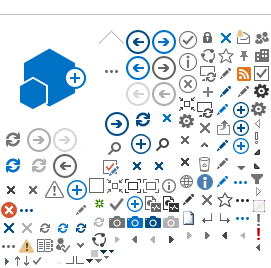The Materials Characterisation Laboratory (MCL) has several updates, including an updated SAXS source resulting in new fluxes roughly double the previous level, a placement student's prototyped air-seperator stage for the SmartLabs, to measure cesium-containing samples, in addition to science highlights, showing some of the support the MCL gives to beamline experiments directly.
Contents:
General updates
Acknowledgments
As a reminder to all staff and users, any work undertaken in the Materials Characterisation Lab does need to be properly acknowledged in any papers, presentations, posters or other publications. From the "Access routes and booking policies for Materials Characterisation Laboratory (R53) - 2020" document that all users are sent, the acknowledgements should take the following form:
Acknowledgements and Co-Authorship
Please find below the various options for acknowledging the instrumentation and technical support /discussions of the Materials Characterisation Laboratory for publications. Please discuss which option with either Gavin Stenning would be appropriate. This is mandatory for all users.
Option 1:
'We gratefully acknowledge the Science and Technology Facilities Council (STFC) for access to neutron beamtime at ISIS, and also for the provision of sample preparation, XX facilities.'
(XX - insert instrument name)
Option 2:
'We would like to thank X. XXX for help on the XX instrument in the Materials Characterisation Laboratory at the ISIS Neutron and Muon Source.'
(X. XXX - insert name of scientific support person; XX - insert instrument name)
Option 3:
For collaborative work we would request co-authorship of the publication with the following affiliation:
ISIS Neutron and Muon Source,
Rutherford Appleton Laboratory,
Didcot,
OX11 0QX,
United Kingdom.
SAXS Source
Sealed tube x-ray sources tend to decline in brightness over time. Measuring the straight-through beam intensity of the SAXS/WAXS (Small Angle X-ray Scattering/Wide Angle X-ray Scattering) instrument has allowed MCL staff to track this decline, and determine that an updated source would be beneficial.
We have replaced the SAXS source, resulting in a gain in intensity of
around 100%, doubling our previous flux in VHR (Very High Resolution), HR (High Resolution) and MR (Medium Resolution) modes.
From this increased brilliance, shorter measurements or more intense measurements will be possible, comparable to when the instrument was first installed; measurement times can be cut as short as 1/4 of the original time.
This can be best seen in a direct comparison of measurements before and after the replacement, shown below.
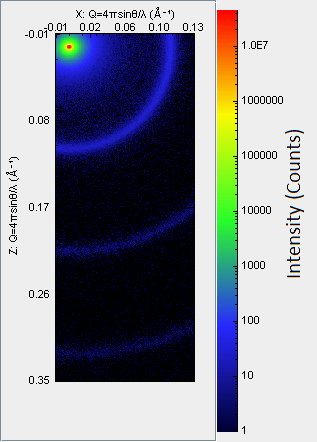

Left: SAXS measurement taken on AgBeH before the replacement; Right: SAXS measurement taken on AgBeH after replacement.
both measurements are in VHR mode, for 600 s.
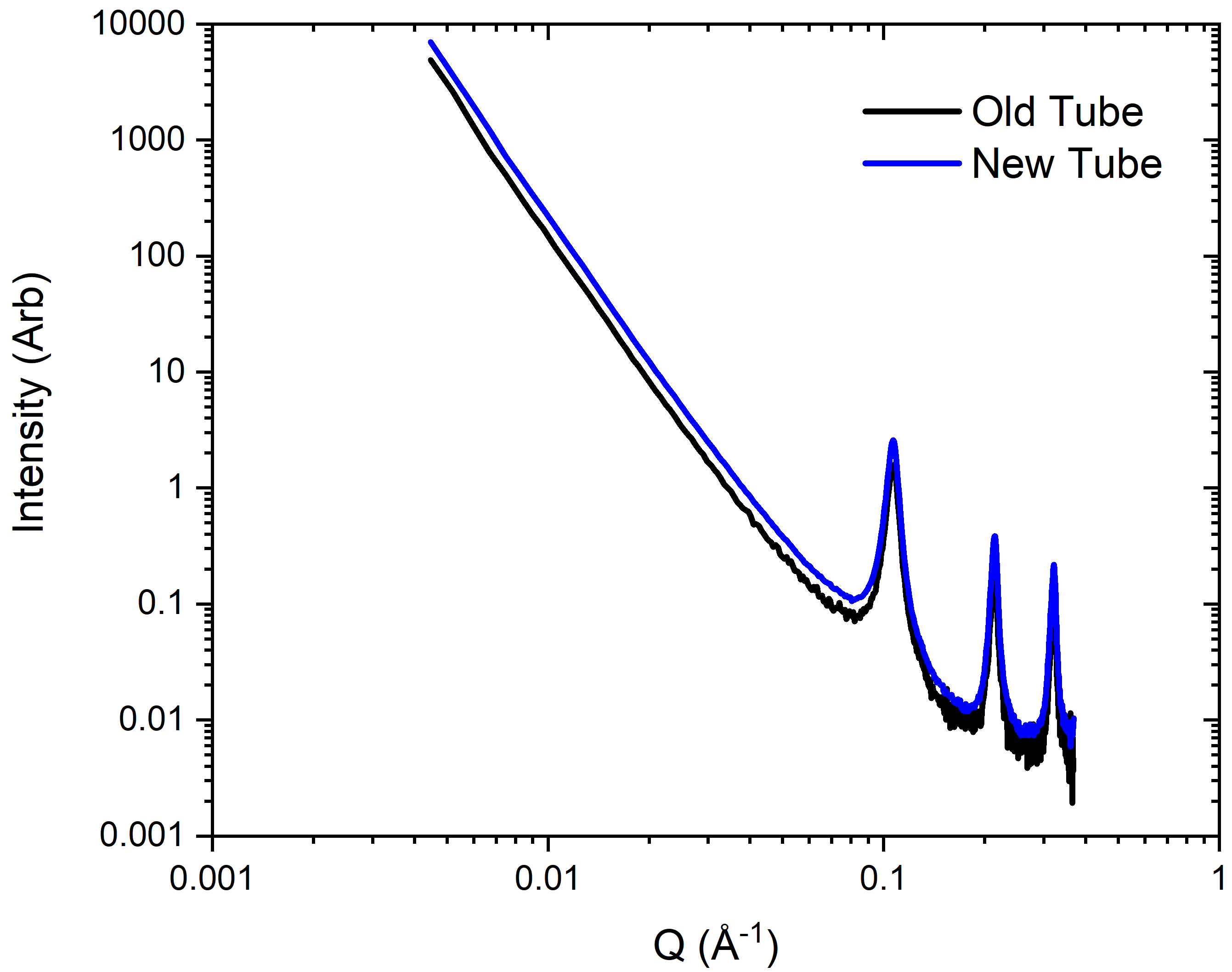
New tube vs. old tube of the above data in a 1D data plot.
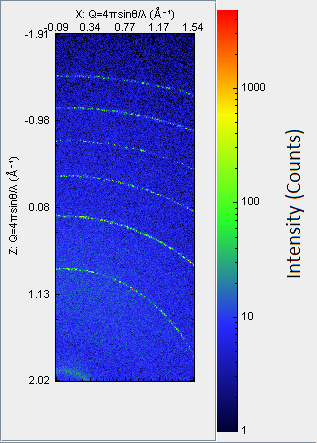

Left: WAXS measurement taken on LaB6 before the replacement; Right: WAXS measurement taken on LaB6 after replacement.
both measurements are in VHR mode, for 600 s.
The increased brilliance of the instrument will be of benefit to the user programme, as will the standard tracking that we perform to ensure consistency across measurements.
Projects
Design and manufacture of a Sample Chamber for study into Helium-3 Spin-filter Cells
Holly Barnfield is an industrial placement student in the ISIS Neutron and Muon Instrumentation Development Group. She has described her currently project below:
My project involved the design and manufacture of a sample chamber that integrates with the Rigaku Smartlab in the characterisation laboratory for X-ray reflectometry analysis. This chamber is intended to house a clamped silicon wafer coated in caesium, simulating the environment of a polarised He-3 spin-filter cell. The main goal is to investigate the surface roughness and thickness of the caesium coating, both of which are critical for the surface relaxation of polarised He-3. By studying caesium, our aim is to improve the coating process to prepare spin-filter cells. Optimising the caesium coating could prolong the polarisation lifetime of a cell, resulting in fewer cell changes during experiments.
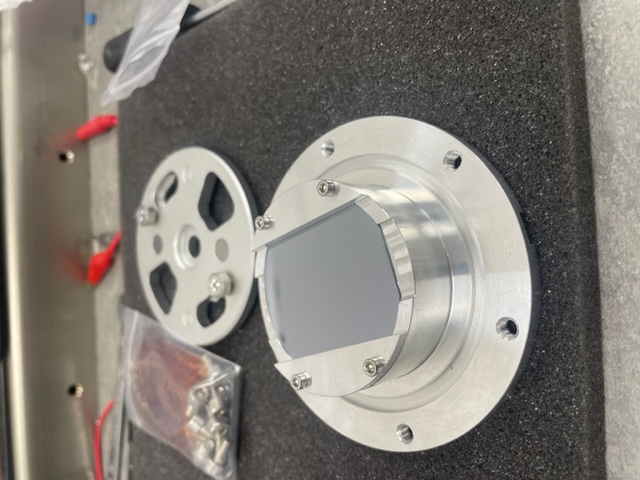
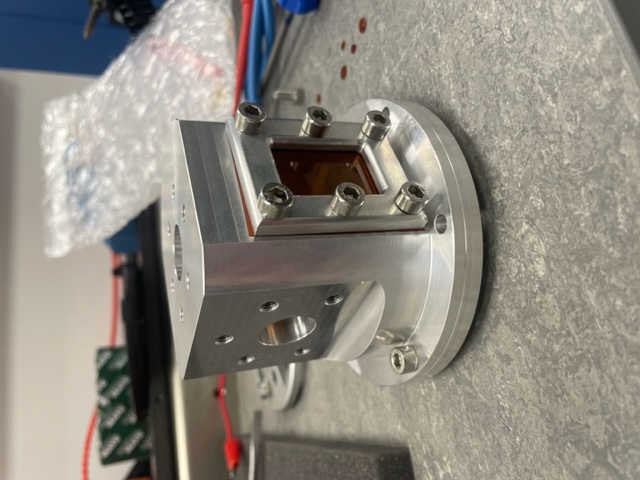

Left: base of sample chamber with silicon wafer clamped on; centre: manufactured complete sample chamber; right: sample chamber fitted onto the Rigaku SmartLab.
After exploring various designs, conducting tests on 3D-printed prototypes, and consulting with Rigaku, a chamber has been successfully manufactured and is currently undergoing tests. Preliminary measurements have been conducted to verify the chamber’s ability to generate accurate data. This includes whether reflectivity profiles remain consistent with the chamber, even with the addition of Kapton windows.

With the chamber now adapted to be airtight, the next phase involves devising a method to coat the silicon wafer with caesium, before taking to the laboratory for analysis. Once this process is refined, we can initiate the investigation into the behaviour of caesium when it coats the inner surface of a spin-filter cell.
Science Highlights
SX-XRD - A single crystal diffuse scattering study of structural relaxations arising from dopants in the semiconductor Cd0.9Zn0.1Te
Paper from Matthias Gutman.
A paper was published on the measurment of diffuse scatter in single crystal diffraction, comparing the data obtained from the SX-XRD instrument and model data using a large box Monte Carlo model, determining that there are specific directions of relaxation in the doped semiconductor. Diffuse scatter generally requires synchrotron measurements to be observable, while in this paper it is shown to be possible on a modern lab x-ray instrument.
The measurements were very successful and the diffuse scatter was very clearly observed in the data. The paper has also been used as the cover page for Vol 135, Issue 21 of the Journal of Applied Physics, where it is published.
The paper was even featured as the cover page for the issue.
SQUID/MPMS - Gapless dynamic magnetic ground state in the charge-gapped trimer iridate Ba4NbIr3O12

Paper Gavin and the MCL contributed towards.
A paper was published in Physical Review Materials, which used data obtained from the MCL as part of a broad collaboration, using the PPMS and MPMS3 (SQUID) equipment in the lab.
The PPMS was used to measure electrical resistivity as a function of sample temperature between 2 and 300 K, with applied magnetic fields up to 90 kOe. The 3He option for the SQUID instrument was used to measure specific heat and ac magnetic susceptibility with respect to temperature between 0.05 K and 4 K, while DC magnetic susceptibility was measured with the SQUID between 2 and 300 K in fields up to ±60 kOe.
The ac/dc magnetisation and specific heat measurements on the 3He option for the SQUID instrument were combined with muon spin rotation/relaxation measurements, reportedly showing no magnetic phase transition down to 50 mK, despite the material being found to have significant antiferromagnetic interactions between the Ir local moments. The resistivity measurements taken on the PPMS instrument were reported to indicate an energy gap at the Fermi level. The scaling between the dc magnetic susceptibility and magnetisation with respect to temperature, measured on the SQUID, were reported to be consistent with spin-liquid systems.
For more details on the Materials Characterisation Lab, please
contact the MCL Lab Manager, Dr Gavin Stenning and check out the Materials Characterisation Lab
website.
